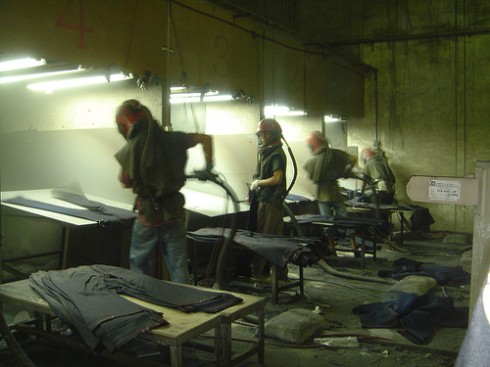High Risk Jeans: Why Levi’s and H&M Want to Take Sandblasting Out of Fashion
Levi’s and H&M are teaming up with the International Textile Garment & Leather Workers’ Federation to ban sandblasting for apparel products (denim and heavier materials are most likely to receive the treatment), and it’s because of a disturbing trend.
Not a fashion one, though if you’re not a fan of the sandblasted look you may already be in agreement.
“Between 2005 and 2009, 40 garment workers in Turkey reportedly died from a lung disease caused by exposure to crystalline silica, a substance used to make sandblasted denim. As a result, the Turkish government outlawed the practice; last year, Levi’s and H&M stopped using sandblasted products.” {The Cut}
Hopefully the pairing adds weight to the 2009 decision of H&M and Levi’s not to purchase or sell sandblasted products, when the companies determined that safe labor practices were skirted with suppliers and subcontracters.
Treehugger reports that “when the Turkish Health Ministry prohibited the practice in 2009, many firms simply picked up stakes and made new deals in less-stringent Pakistan, Egypt and Syria.”
Professor Zeki Kılıçaslan, a chest physician at Istanbul University, says that sandblasting is “a very profitable job because it adds a value of 50 percent to a product.” {Treehugger}
When continuously inhaled, crystalline silica dust can get stuck in lungs and irritate them, reducing lung capacity and leading to bronchitis or cancer. It wasn’t specified which disease killed the Turkish workers, but it’s definitely worth eliminating the practice if it means reducing the risk of garment workers becoming fashion victims.

